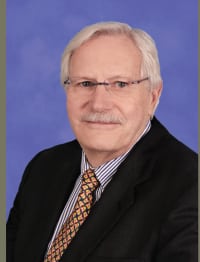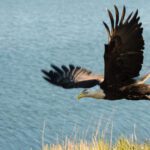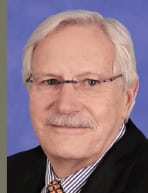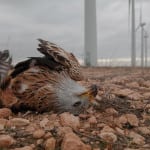In the race to generate and distribute renewable energy, developers must clear numerous regulatory hurdles. For many projects, this may include obtaining a voluntary “incidental take” permit under the Bald and Golden Eagle Protection Act (BGEPA).
The BGEPA incidental take permitting program has frustrated both developers and operators due to, among other things, uncertainty of costs, timing, and outcomes. Recently, developers choosing to obtain an eagle “incidental take permit” for activities such as wind energy development received some good news—the U.S. Fish and Wildlife Service (FWS) increased its bald eagle population estimates, which should create opportunities for additional wind development, or at least reduced regulation, in areas now deemed to have more bald eagles.
Background
Under FWS’s current legal interpretation—which many legal minds reasonably dispute—BGEPA generally prohibits both intentional and incidental “take” (e.g., the injuring or killing) of bald and golden eagles. According to FWS, take is incidental when it is associated with, but not the purpose of, an activity (i.e., when take is accidental). Despite these general prohibitions, BGPEA allows businesses to obtain incidental take permits that shield them from liability when they comply with the terms of those permits. These permits may be important for developers to obtain, particularly if projects are sited on federal land or financial backers require these permits as insurance against governmental enforcement demands.
COMMENTARY
Relying on its interpretation of “take,” FWS has promulgated regulation providing that incidental-take permits only may issue when the take authorized is “compatible with the preservation of the bald eagle or the golden eagle.” This “preservation standard” means that the amount of take authorized (1) cannot destabilize the breeding populations of eagles within any of the six established eagle management units (EMUs), which include the Atlantic Flyway, Mississippi Flyway, Central Flyway, Pacific North Flyway, Pacific South Flyway, and Alaska; and (2) must allow for the persistence of local populations throughout the geographic range of each species.
Based on these requirements, how FWS calculates what amount of take of bald and golden eagles is compatible with their preservation matters greatly for project development and operations. Without getting too technical, in 2016, FWS set eagle take limits for each EMU using the 20th quantile of its eagle population estimates and a take rate. Using an estimated U.S. population of bald eagles of 143,000, FWS adopted conservative take limits for each EMU, which led to stricter terms in its issued incidental take permits. Despite evidence indicating that both bald eagle and golden eagle populations are resurging—even as wind-energy facilities proliferate—FWS has been unwilling to modify its approach for calculating take limits. Accordingly, the only way those limits can increase is if FWS’s once-every-six-years population estimate finds a larger eagle population.
Updated Bald Eagle Population Estimates and Take Limits
FWS recently released its updated bald eagle population estimates and take limits for four EMUs: the Atlantic Flyway, Mississippi Flyway, Central Flyway, and Pacific North Flyway. According to FWS’s Notice, it estimates that the bald eagle population in these four EMUs is 316,708, or more than twice its last bald eagle population estimate for the entire U.S. Based on this increased estimate, bald eagle take limits for each of the four relevant EMUs has increased dramatically. For example, for the Central Flyway—which comprises more than half of the U.S. landmass and includes wind-rich states like Texas and Oklahoma—take limits increased by 21 times.

Benefits for Renewable Energy and Transmission Infrastructure
The updated population estimates and take limits provide meaningful benefits for renewable energy, electricity transmission, and other projects seeking incidental take permits under BGEPA. First and foremost, the increased take limits will allow FWS to issue more incidental take permits in the four implicated EMUs. Generally, this means that each EMU has a significantly greater capacity for project development. Perhaps more importantly, these increased take limits should create more capacity for projects in coveted wind- and solar-rich areas within the EMUs that may have been off-limits due to concerns about the persistence of local populations of bald eagles. The potential to site additional projects in these areas could provide significant economic benefits for developers and operators.
Second, the increased take limits may provide an opportunity for existing permittees to obtain greater operational flexibility. Due to past low take limits in the Central Flyway, for example, permits already issued for projects in this area might have stricter take limits due to high facility concentrations as well as low estimated eagle populations. Based on FWS’s updated analysis, permittees may consider seeking a permit amendment to increase numerical take limits in advance of their 5-year review based on FWS’s updated information. Doing so could reduce the risk of interruptions to operations.
Third, FWS may now be less likely to initiate enforcement against the many facilities that do not have “incidental take” permits. Separately, where enforcement actions are pending, the increased abundance of bald eagles may help explain unexpected collisions and be a mitigative factor that a facility owner can use to argue for a declination of prosecution or reduced penalty.
Overall, the updated bald eagle population estimates and take limits are an encouraging sign for renewable energy and transmission development throughout the relevant EMUs. Additionally, to date, these updated figures have not publicly generated controversy among major environmental groups like the National Audubon Society.
Additionally, FWS may be updating its eagle permit rules to streamline the permitting process and reduce costs, with the publication of new proposed rules anticipated in May of 2022. Any improvement in the regulatory burden and cost of these permits will be welcome and may encourage more eagle voluntary permit applications by the power generation industry.
—Jared Wigginton is an experienced environmental, natural resources, and energy attorney committed to advancing renewable energy and related infrastructure projects by assisting businesses with permitting, regulatory advocacy, litigation, and enforcement matters. To help fulfill this commitment, Wigginton founded Good Steward Legal, a principles-based business law office dedicated to protecting and advancing its clients’ interests by providing them with cost-effective, high-quality legal service.










